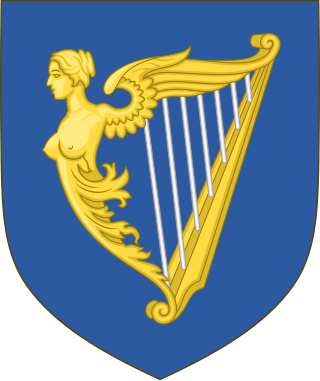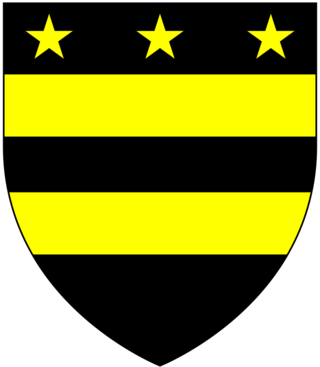Related Research Articles

The Irish House of Commons was the lower house of the Parliament of Ireland that existed from 1297 until the end of 1800. The upper house was the House of Lords. The membership of the House of Commons was directly elected, but on a highly restrictive franchise, similar to the unreformed House of Commons in contemporary Great Britain. Catholics were disqualified from sitting in the Irish parliament from 1691, even though they comprised the vast majority of the Irish population.

George Clarke, of All Souls, Oxford, was an English architect, print collector and Tory politician who sat in the English and British House of Commons between 1702 and 1736.

Browne Willis was an antiquary, author, numismatist and politician who sat in the House of Commons from 1705 to 1708.

Trevor Hill, 1st Viscount Hillsborough was an Anglo-Irish landowner and politician who sat in the Irish House of Commons from 1713 to 1715 and in the British House of Commons from 1715 to 1722.

Robert Wood was an Irish-British traveller, classical scholar, civil servant and politician.

Alan Brodrick, 1st Viscount Midleton, PC (Ire) was a leading Irish lawyer and Whig politician who sat in the Parliament of Ireland between 1692 and 1715 and in the British House of Commons from 1717 to 1728. He was Speaker of the Irish House of Commons and Lord Chancellor of Ireland. Although he was a man of great gifts, he was so hot-tempered that even Jonathan Swift is said to have been afraid of him.
Doneraile was a constituency represented in the Irish House of Commons until 1800. Doneraile is in County Cork, Republic of Ireland.
Cockermouth was the name of a constituency of the House of Commons of the Parliament of England in 1295, and again from 1641, then of the Parliament of Great Britain from 1707 to 1800 and of the Parliament of the United Kingdom from 1801 to 1918. It was a parliamentary borough represented by two Members of Parliament until 1868, and by one member from 1868 to 1885. The name was then transferred to a county constituency electing one MP from 1885 until 1918.
Daniel Pulteney was an English government official and politician who sat in the House of Commons from 1721 to 1731.
Events from the year 1717 in Ireland.
Montagu Venables-Bertie, 2nd Earl of Abingdon PC, styled Hon. Montagu Bertie until 1682 and Lord Norreys from 1682 to 1699, was an English nobleman.
The Honourable Gustavus Hamilton was an Irish MP.
Ralph Verney, 1st Earl Verney, of Middle Claydon, near Buckingham, Buckinghamshire, known as The Viscount Fermanagh until 1742, was initially a Tory and later a Whig politician who sat in the House of Commons in two phases between 1717 and 1752.
Edward Trelawney, of Coldrenick, near Liskeard, Cornwall, was an English clergyman who served as dean and archdeacon of Exeter between 1717 and 1726.

Sir Percy Freke, 2nd Baronet of West Bilney, Norfolk and Castle Freke, County Cork, was a baronet in the Baronetage of Great Britain and a Member of Parliament in the Irish House of Commons. His first name was sometimes spelt Peircy.

Sir William Whitelock KC was an English barrister and Tory politician. His name is also spelt Whitelocke and Whitlock.
Walter Carey FRS, of West Sheen, Surrey, was a British administrator and politician who sat in the House of Commons for 35 years from 1722 to 1757.
Thomas Clutterbuck was a British politician who sat in the British House of Commons from 1722 to 1742 and in the Parliament of Ireland from 1725 to 1742.
Charles Delafaye was Member of the Parliament of Ireland for Belturbet from 1715 to 1727 and Chief Secretary to the Earl of Galway and the Duke of Grafton who held joint Governorship. Delafaye shared his that role with Martin Bladen.
John Lewis (1717–1783) was Dean of Ossory from 1755 to 1783.
References
- ↑ Search Ulster Historical Foundation - Biographies of Members of the Irish Parliament 1692-1800
- ↑ Moody, T. W.; Martin, F. X.; Byrne, F. J., eds. (1984). Maps, Genealogies, Lists: A Companion to Irish History, Part II. A New History of Ireland. Vol. IX. Oxford: Oxford University Press. p. 530. ISBN 0-19-821745-5.